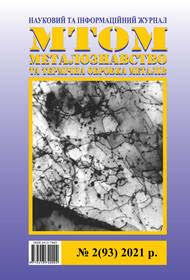Mechanism for choosing organizational and technological solutions based on integrated management of the construction process
DOI:
https://doi.org/10.30838/J.PMHTM.2413.270421.7.736Abstract
Problem statement. The introduction of new requirements for rationing in the construction industry provides for changes in the rationing methodology, through the use of a predominantly parametric method. This stimulates the use in management of modern approaches, methods and mechanisms, technologies, innovative organizational and technological solutions to improve the quality and volume of construction, which in turn can accelerate the recovery from the crisis and the development of the construction industry as a whole.The use of the parametric method, in addition to the certain advantages indicated above, creates new challenges for the efficiency of management in the construction industry. On the one hand, there is an increase in the alternatives of possible managerial and organizational and technological solutions; identification of the list and consequences of risks for each alternative; improvement of the procedure and processes for predicting the consequences of each of the alternatives; putting forward new requirements for the information necessary for decision-making, the possibilities of its analysis and interpretation.On the other hand, the use of such a selection mechanism and the lack of clear requirements and orders can increase the costs of achieving the declared quality and reliability requirements of the construction object, and accordingly increase financial and organizational and technological risks. This creates the preconditions for the use of integrated management with the use of appropriate organizational and technological solutions that can satisfy both the requirements of quality management and risk management in construction. Purpose of the article − describe and substantiate the possibility of applying the mechanism for choosing organizational and technological solutions aimed at achieving parametric criteria as target indicators for managing construction processes in conditions of uncertainty using a functional model of a system-integrated approach. Conclusion. It has been substantiated that for an effective process of managing construction processes within an integrated approach, in conditions of uncertainty, it is necessary to use a system-wide algorithmic mechanism, which will ensure the coordination of control functions, their parallel and continuous execution within individual processes, the choice and decision-making in emergency situations for a minimum possible time period.This requires the compliance of each organizational and technological solution with the established criteria and the possibility of their comparison, in order to select the most effective in terms of leveling risk, achieving efficiency − in relation to their cost; and criteria for feasibility, assessment of the impact on quality indicators, implementation in time, competence and technological feasibility − in relation to their ability to implement.
Keywords: construction process management; rationing; parametric method, integrated approach; process
approach; situational approach; a mechanism for choosing organizational and technological solutions

Downloads
Published
Issue
Section
License
Authors that are published in this journal agree to follow the conditions:
Authors reserve the right to the authorship of his work and cede the right to the journal of first publication of this work on conditions of the license under the Creative Commons Attribution License, which allows others to distribute it freely with the obligatory reference to the author of the original work and the first publication of the work in this journal.
